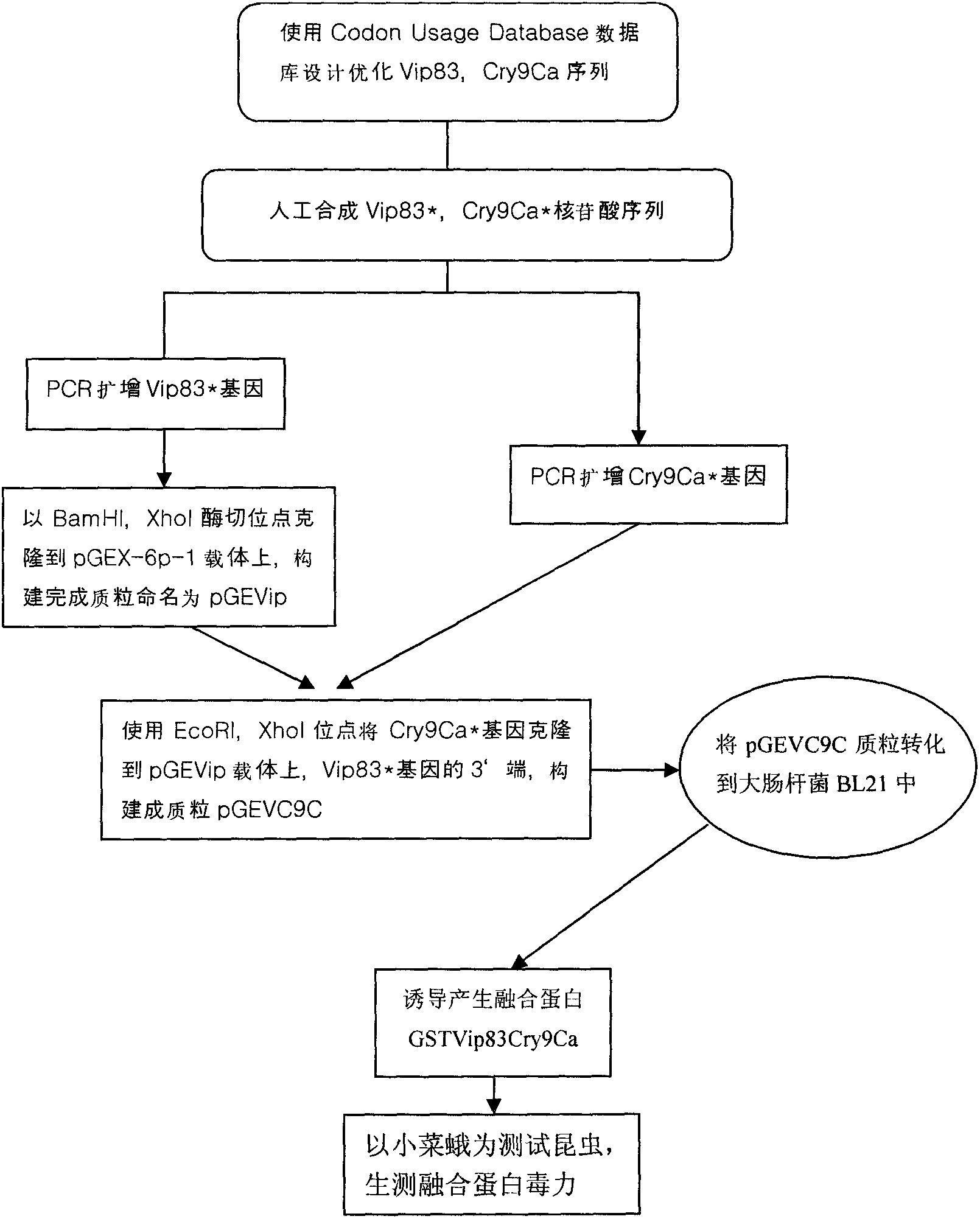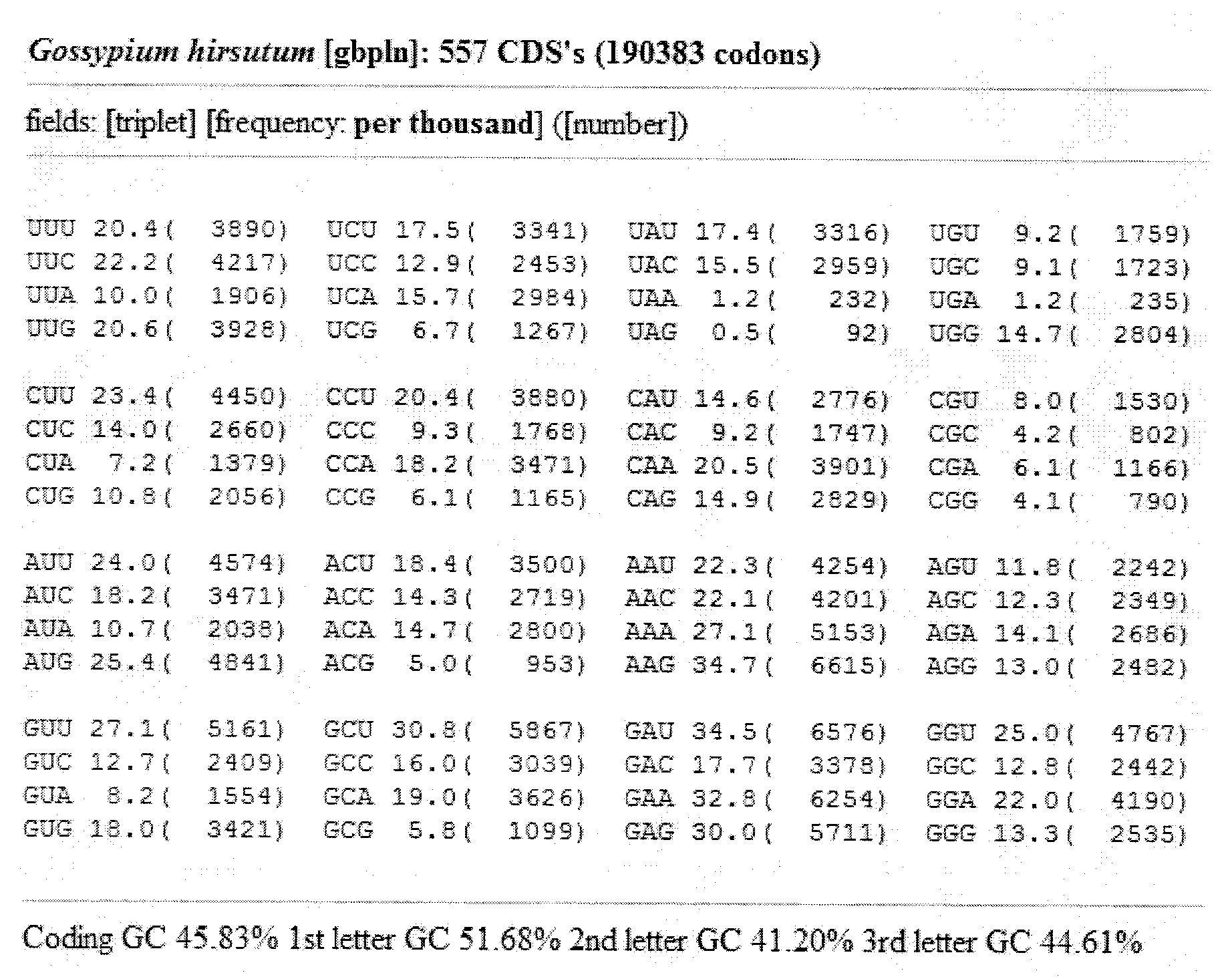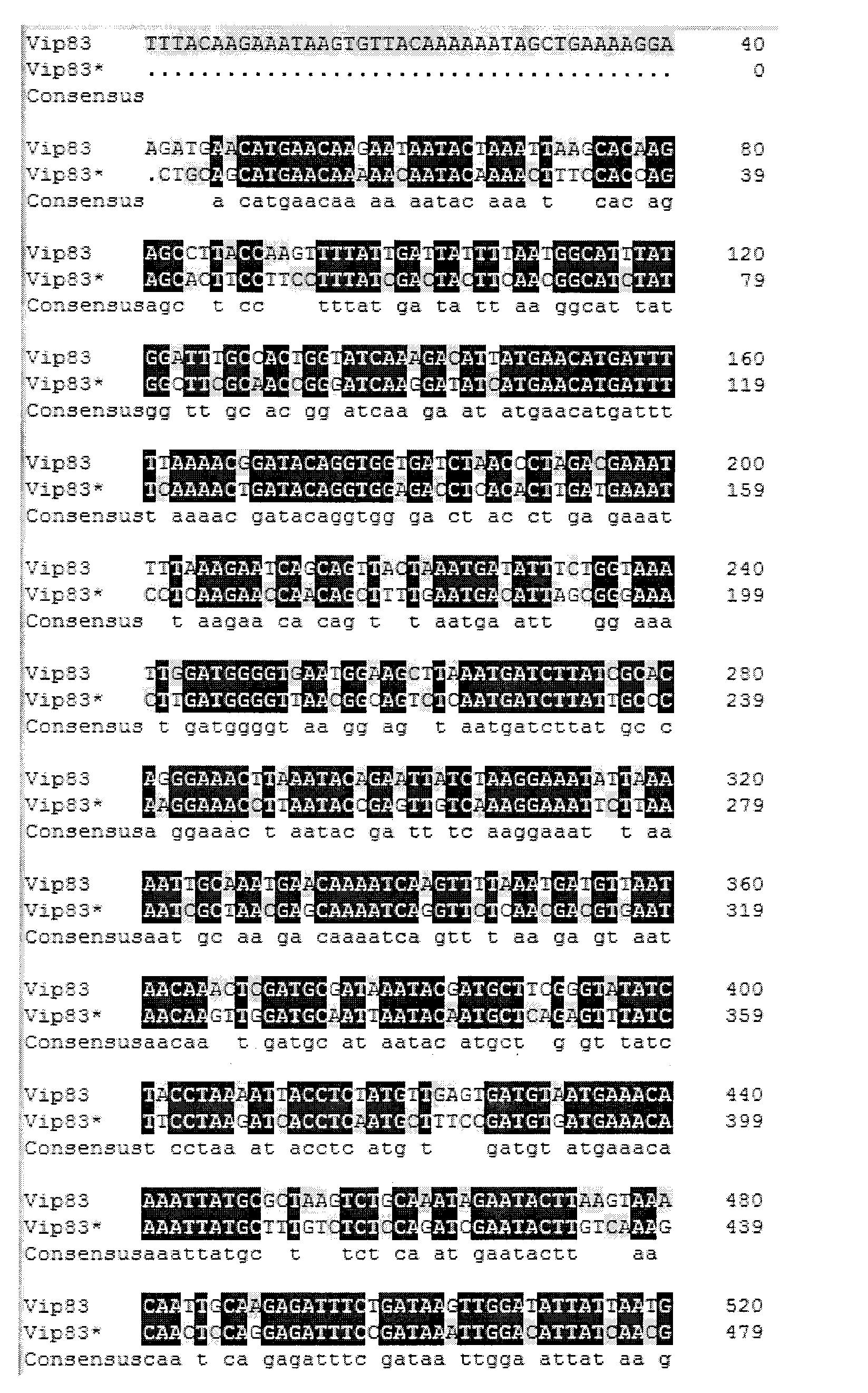Synthetic Bt bivalent fusion protein with high virulence against lepidoptera, and coding gene thereof
A technology of artificial synthesis and protein, applied in the direction of hybrid peptides, microbial-based methods, biocides, etc., can solve problems such as unprecedented
- Summary
- Abstract
- Description
- Claims
- Application Information
AI Technical Summary
Problems solved by technology
Method used
Image
Examples
Embodiment 1
[0029] Example 1 Vip83* of upland cotton codon bias; Cry9Ca* gene optimization
[0030] Optimization steps: use the codon preference query to use the online database Codon Usage Database (http: / / www.kazusa.or.jp / codon), enter Gossypium hirsutum in the QUERY Box for search with Latin name of organism dialog box, click submit, Select Gossypium hirsutum in the pop-up web page. Obtain the upland cotton preferred amino acid codon sequence list (see figure 2 ). from figure 2 From the analysis, it can be concluded that the GC content of the gene used by upland cotton is 45.83%, and the second and third codons prefer A or T.
[0031] Find the sequences of Vip83 (Accession No. AY044227) and Cry9Ca (Accession No. AX100534) from Genebank, according to the obtained from Codon Usage Database figure 2 The preferred codons are to partially replace the codons corresponding to the original sequences of Vip83 and Cry9Ca by using high-frequency codons used by plant genes, partially remove...
Embodiment 2
[0034] Example 2 Construction of prokaryotic expression plasmids pGEVC9C, pGEVip, pGEC9C.
[0035] Vip83 * Amplification of the gene: according to the Vip83* sequence (see Figure 3A ) See, design amplification primers, add BamH I enzyme cutting site at primer 5 ' end, remove stop codon at 3 ' end, add enzyme cutting site EcoR I, this primer design sequence is as follows:
[0036] Forward primer (5'-Vip83-BamH I): 5'-ACC GGATCC The underlined part of ATGAACAAAACAAT-3' is the enzyme cutting site.
[0037] Reverse primer (3'-Vip83-EcoR I): 5'-AAG GAATTC The underlined part of CTTATCATCATC-3' is the enzyme cleavage site.
[0038] Using the pUC57-V83 plasmid as a template, Vip83* was amplified by PCR.
[0039] The PCR reaction system is as follows (total reaction volume 50 μl):
[0040]
[0041] PCR reaction conditions: pre-denaturation at 94°C for 5 min; denaturation at 94°C for 30 s, annealing at 55°C for 30 s, extension at 72°C for 1 min and 20 s; 30 cycles; extensio...
Embodiment 3
[0063] Example 3 Prokaryotic expression and bioassay of Vip83Cry9Ca* fusion gene in Escherichia coli.
[0064] The pGEVC9C plasmid, pGEVip plasmid, and pGEC9C plasmid were respectively transformed into E. coli expression host BL21. Verify the positive clones, activate the identified clones overnight, transfer to 1L LB liquid medium containing 100μg / ml Amp with a volume ratio of 1%, culture at 37°C for 2-3h, when the A600 reaches about 0.6 , adding the inducer isopropyl-β-D-thiogalactopyranoside (IPTG) to a final concentration of 0.5mM, and culturing at 22°C and 180rpm for 25h. Collect the thalline by centrifugation, then wash the thalline once with 1% Tris buffer (1% Tris, 50mM NaCl), and then wash it with 50ml 50mM NaNO 3 , add 2% mercaptoethanol solution to resuspend the cells. Then use a high-pressure disruptor (purchased from GEA Niro Soari company model: NSI0012K) to disrupt the cells, and collect the cell disruption solution.
[0065] The expression of fusion protein ...
PUM
 Login to View More
Login to View More Abstract
Description
Claims
Application Information
 Login to View More
Login to View More - R&D
- Intellectual Property
- Life Sciences
- Materials
- Tech Scout
- Unparalleled Data Quality
- Higher Quality Content
- 60% Fewer Hallucinations
Browse by: Latest US Patents, China's latest patents, Technical Efficacy Thesaurus, Application Domain, Technology Topic, Popular Technical Reports.
© 2025 PatSnap. All rights reserved.Legal|Privacy policy|Modern Slavery Act Transparency Statement|Sitemap|About US| Contact US: help@patsnap.com



